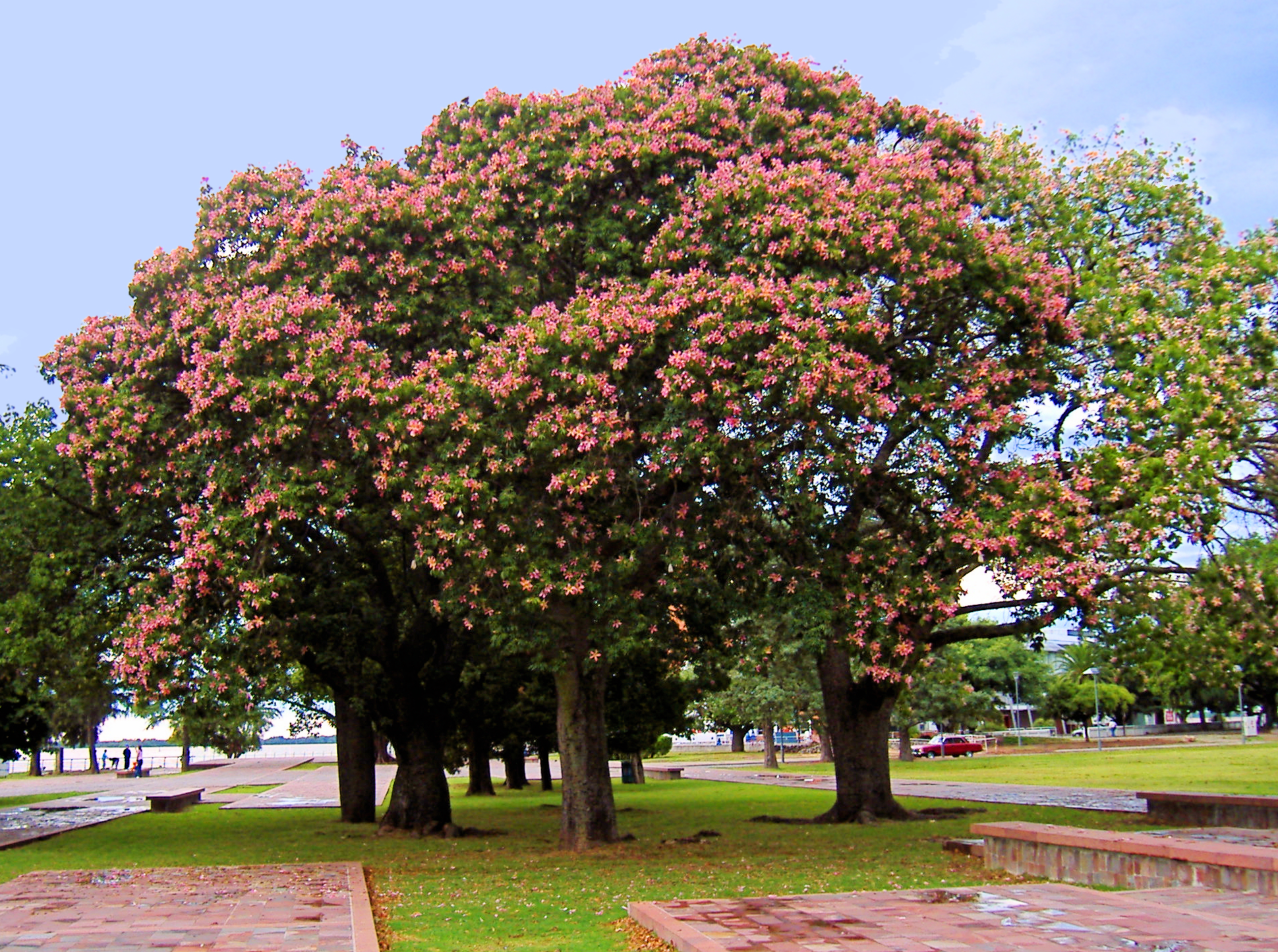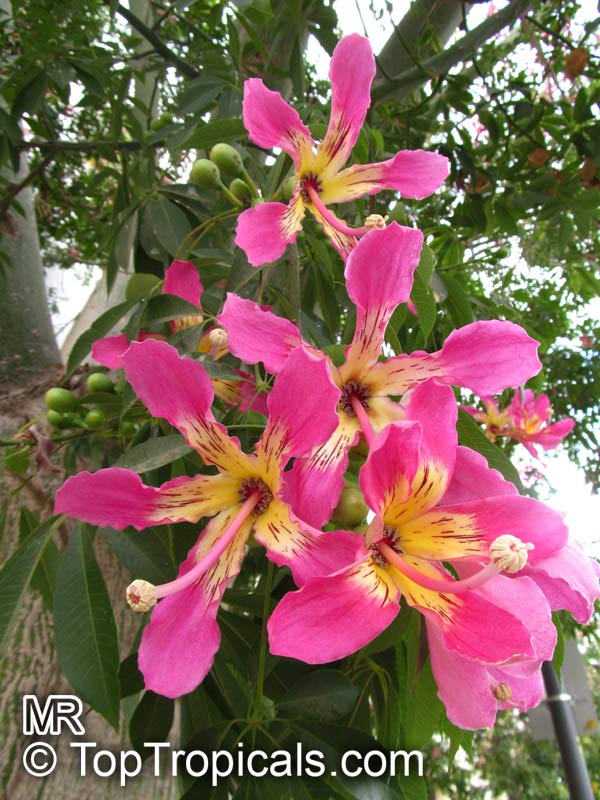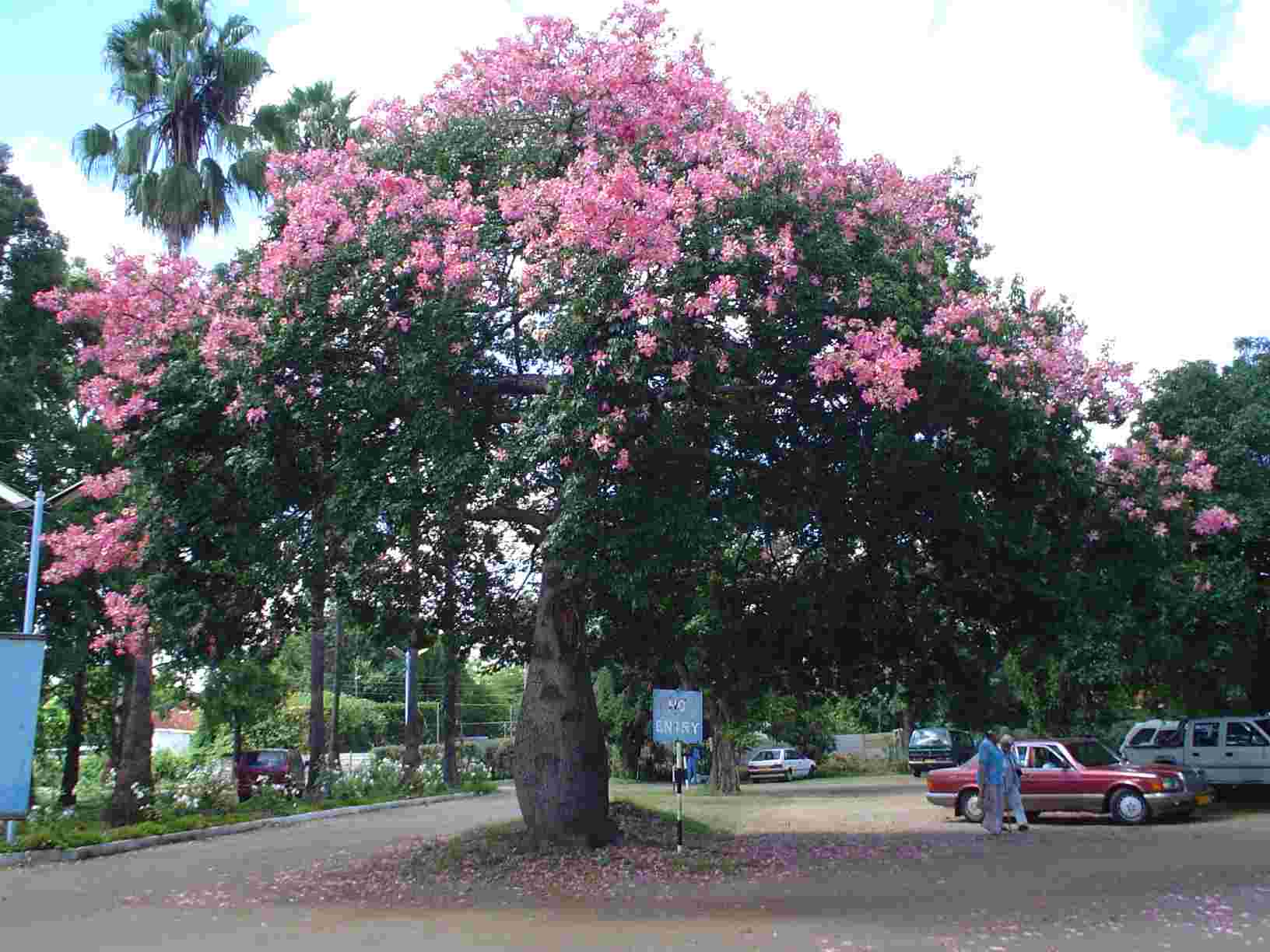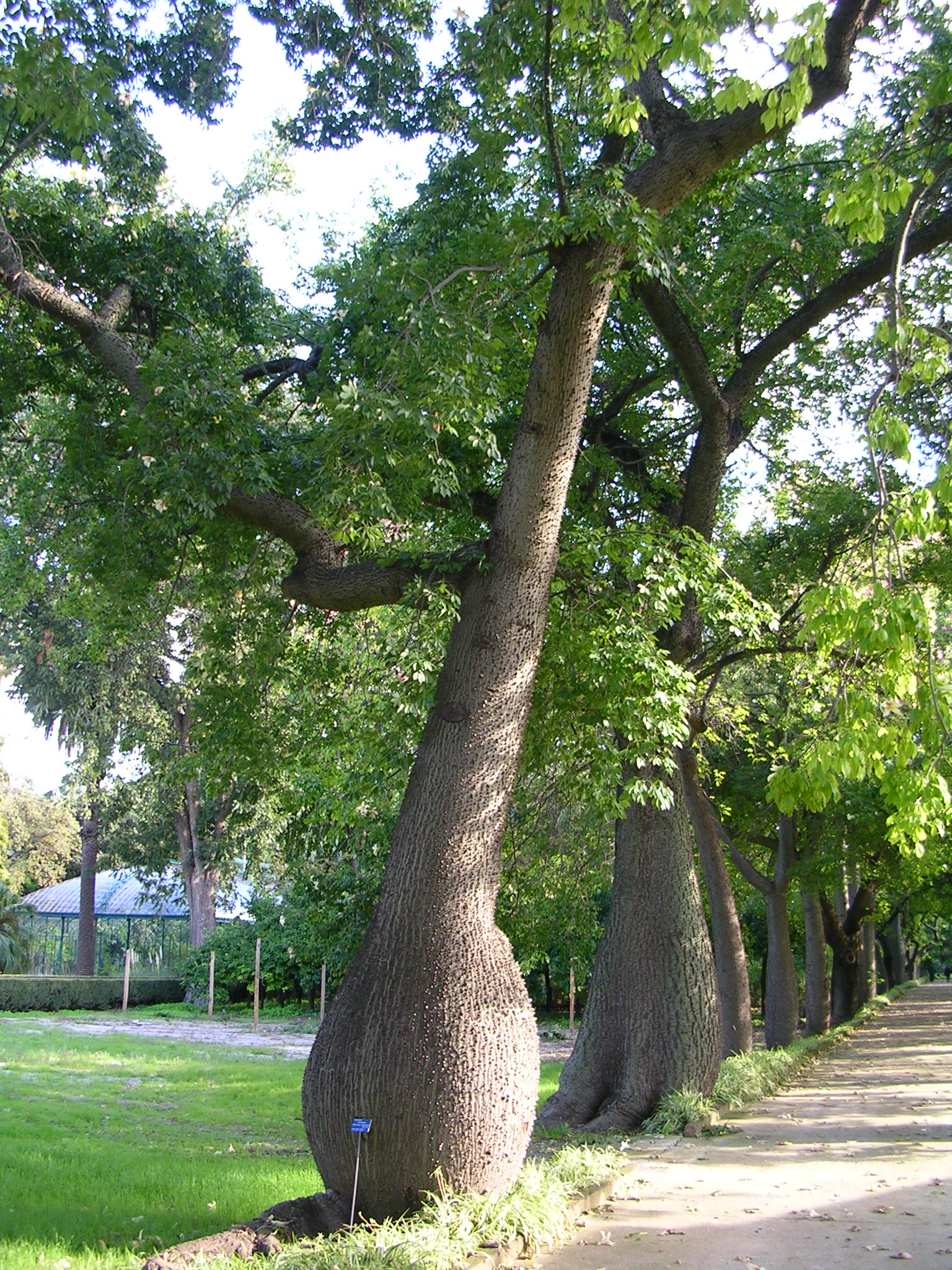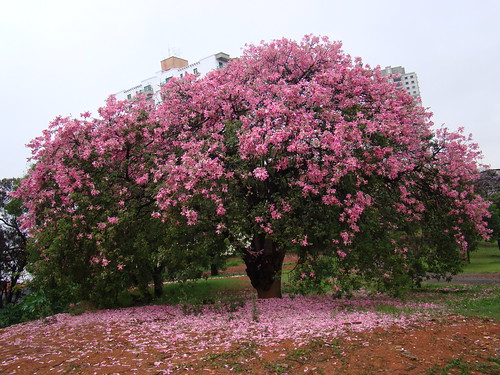Ceiba speciosa
Silk Floss Tree ( Ceiba speciosa)
The floss silk tree ( Ceiba speciosa) is a species of the genus Ceiba in the subfamily of the silk-cotton tree crops ( Bombacoideae ) within the family (Malvaceae ). It is also called " Chorisie ". It is native to South America and is used as an ornamental plant.
Description
The floss silk tree grows as a broad crown and reaches stature heights of up to 15 meters. His impressive stature since its thick trunk is slightly swollen barrel-shaped in older trees store water for the dry season, has him his Spanish common name " palo borracho " ( directly translated as " drunken tree " ) is entered. The trunk is covered with sharp spines that erupt nippled from the bark at the base. The bark of young trees is green, gray in old trees. As the trees in the dry season are often leafless months, they have a somewhat skeletal appearance. The change-constant leaves have a length of up to 12 cm and have long stalks. The palmate leaf blades are composed of five to seven leaf sections. The leaves fall to prevent evaporation into the dry season.
In its heyday ( in the leafless state) the tree crown acts as shrouded in a cloud of pink flowers. The handsome, large flowers appear in clusters on short branches and are usually colored pink to purple. The five petals are brightened to Blütengrund back and spotted lily -like dark. The stamens are connected to up to 8 cm long center column, which makes it about as long as the petals and hangs like a bell from the flower.
For a length of up to 20 cm and a diameter of about 5 cm slightly pear-shaped, cone- shaped, corky capsule fruits fall when ripe, the flaps down and the white, silky ( hence the name ) capsule cotton swells like cotton wool strips out ( " foil silk " means " waste silk "). The seeds are spread with the capsule cotton wind similarly to the poplars. This also shows the relationship to the Kapok tree ( " cotton tree"). His German trivial name from the floss-silk tree of his white capsule wool hanging fruit to time ( the time of leaf sprouting ) as cotton strips.
Dissemination and use
This character tree of the Brazilian semi-arid forests growing in Southern Brazil ( Catinga ) and adjacent areas (Gran Chaco ) to Argentina into it.
The floss silk tree is often planted as an ornamental plant in tropical and subtropical areas, such as a park tree in California, rarely also in Spain. The spongy, light wood was popular with the South African population for the construction of canoes and rafts.
Other common names: English: " Floss Silk Tree", Spanish ( official name ): " Ceiba del Brasil ".
Swell
- Werner Grandjot: Guide through the vegetable kingdom of the tropics. Leichhardt Ingen near Cologne second edition, 1981.
- Hugh Johnson et al.: The Big Book of forests and trees. Stuttgart 1983.
- Jens G. Rohwer: plants of the tropics. Munich / Vienna / Zurich 2000.

